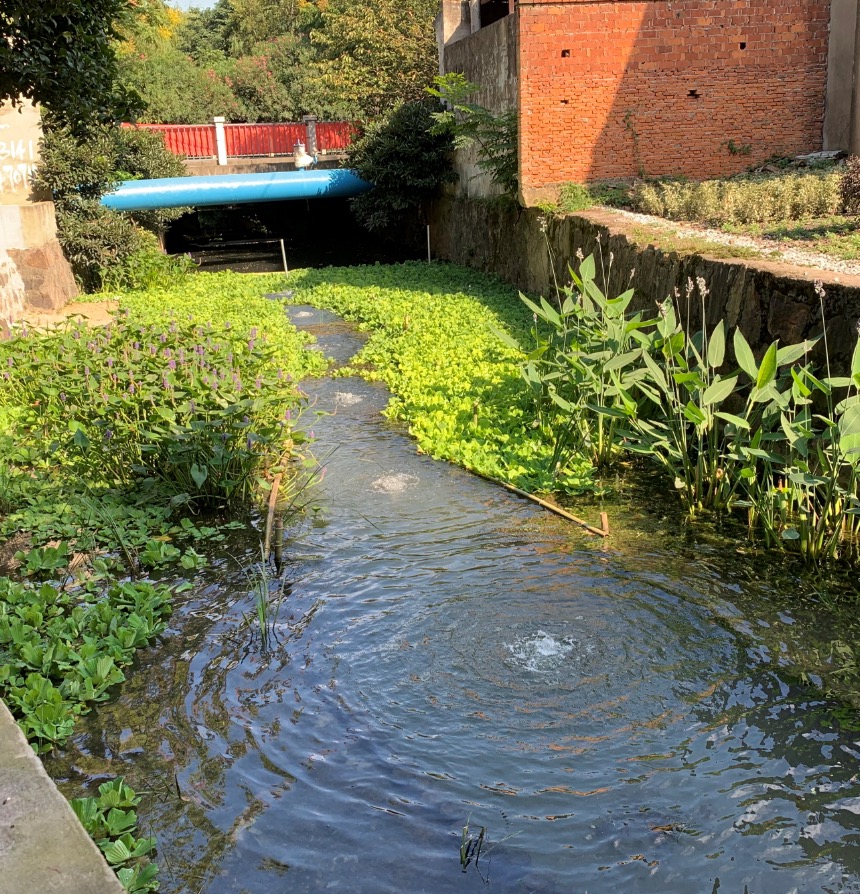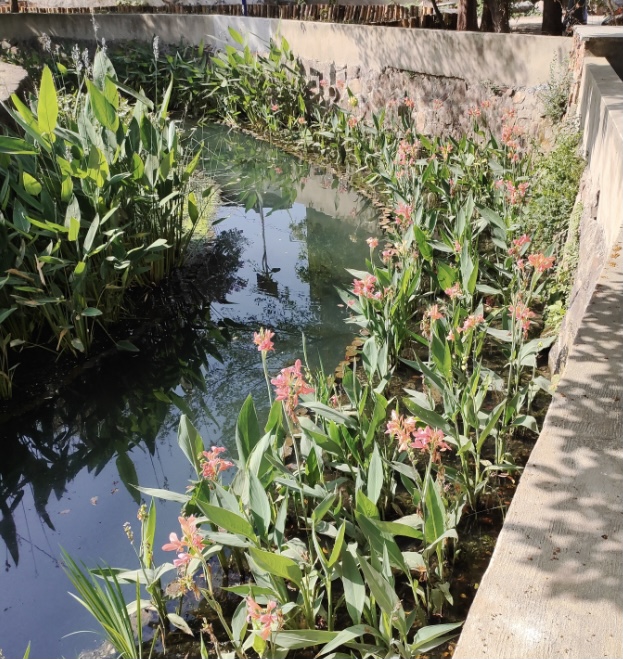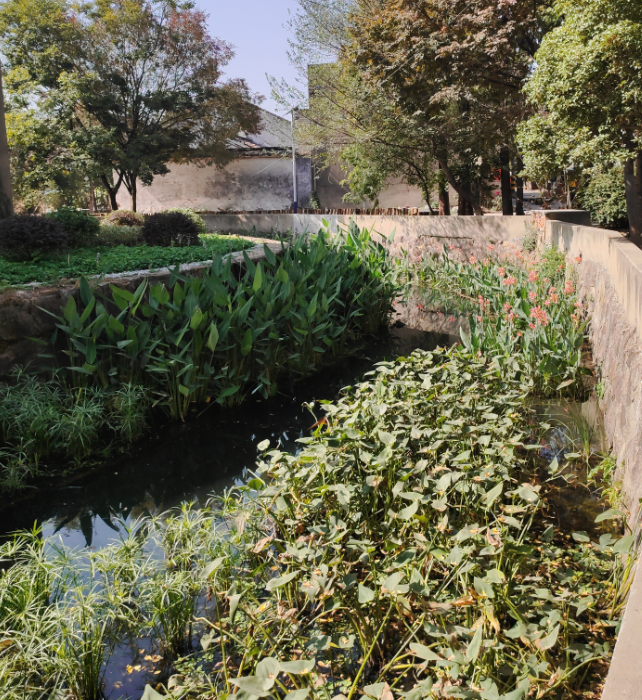The river is silted with sediment and lacks water ecology. There are privately cultivated vegetable fields and livestock and poultry breeding on both sides of the river. Residents on both sides of the river dump domestic sewage, domestic garbage and wash kitchen garbage into the river, causing serious pollution to the river. The main difficulty of river regulation lies in flood discharge in rainy season, which is characterized by large amount of water, rapid water speed and difficult construction of water ecosystem. Before treatment, the river water quality was slightly black and smelly.
In view of this situation, in addition to conventional sediment dredging, the concept of constructed wetland was introduced, and an "artificial wetland-like" ecosystem was constructed. The wetland bed is constructed in the river, which forms the staggered flow pattern of slow change and rapid change to obtain the best water flow conditions. By matching different fillers and wet plants, the coordination of structure and function in the ecosystem is balanced, and the interdependence mechanism between species is established. The pollutants in the water are transferred to the material circulation chain of the wetland system, solidified and degraded, and the water quality is improved while the natural water ecosystem of the river is restored. After treatment, the water quality of the river reaches Class IV water standard stably.




